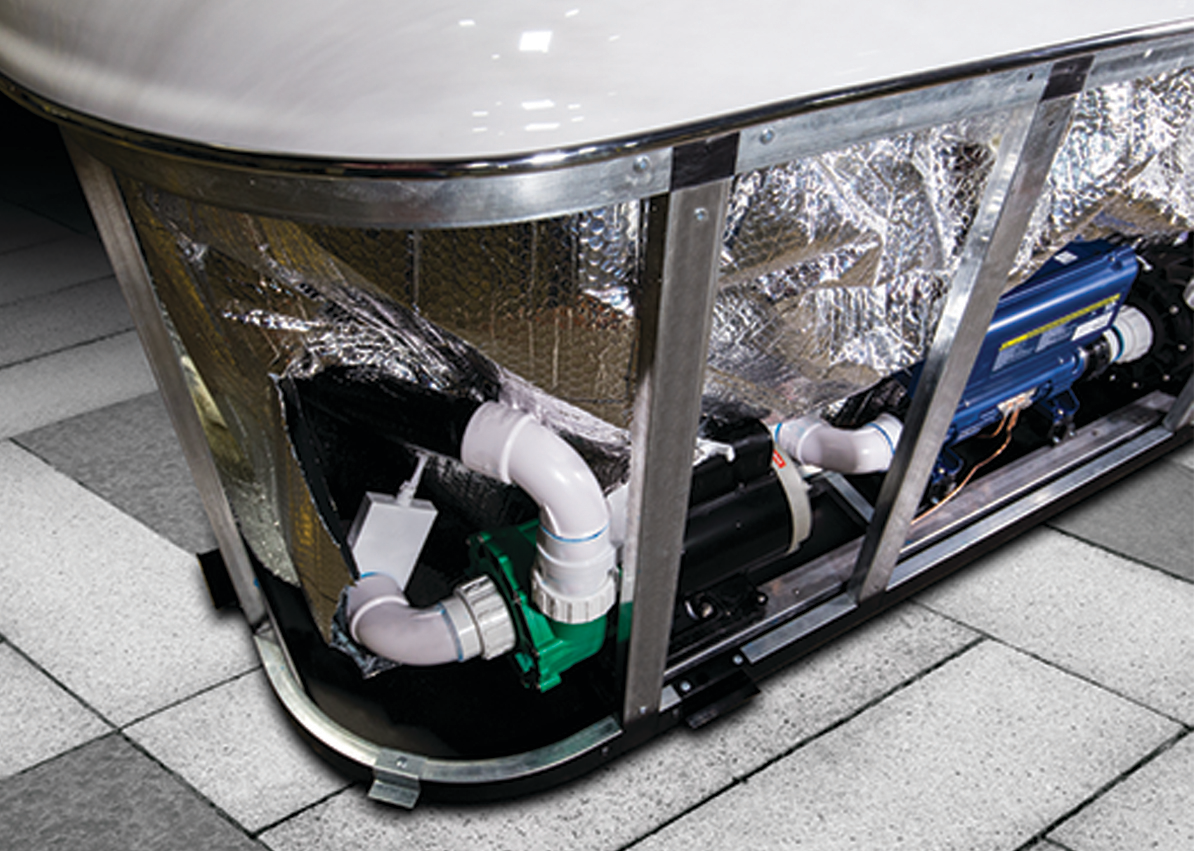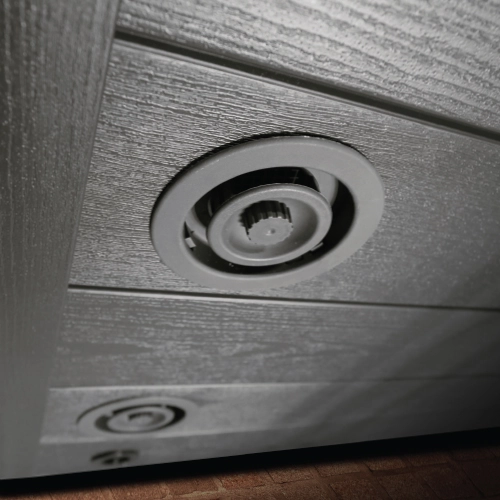Typical Hot Tub Problems: A Complete Guide to Common Hot Tub Issues and What You Can Do About Them
If you’re either looking at owning a hot tub or if you already owned a hot tub, you already know that it’s like owning a car or an appliance. It has moving parts, and working parts, so sometimes things are going to break and require repairs.
“What are the typical problems for hot tubs?” is asked frequently by anyone looking at hot tubs, and it’s one we get at Hydropool on a regular basis. Hot tubs are a significant investment. So understanding what parts are in them, and what can go wrong (and how to fix them) is key for owners.
In this article, we will walk you through:
- The hot tub parts that tend to have the most problems
- The major areas where issues arise
- Our best tips on how to keep hot tub issues to a minimum
At Hydropool, of course we hope your hot tub never breaks. Every Hydropool hot tub is filled with water and all parts of it are tested out before we ship it for delivery.
But it’s a working machine, just like your car, and chances are if you own one long enough, it will require some servicing. We hope this article helps you diagnose a problem if you have it and see what the common issues are if you’re considering owning a hot tub. In more than 40 years of business, we know what can happen and, in most cases, how to prevent it!
What are the Parts of a Hot Tub That Can Have Problems?
Pumps: Hot tubs generally come with one or two pumps. On a one-pump system, the pump powers your jets and your circulation. With a two-pump system, one smaller pump handles your circulation, while the other powers your jets. Two pumps are generally considered superior systems, because the pumps are taxed less. Pumps do a lot of work, with leaking as their most common issue, as seals can eventually fail.
Heater: The heater warms your water. It achieves this by having water forced through an element. If the water isn’t clean and in balance, your heater must deal with those particles going through it. Over time this causes stress on the motor.
Filters: Filters clean your water of particles. Let your filters go too long and your mechanical parts will end up clogged up. Just like your furnace, you will need to clean or replace your hot tub filters regularly.
Water: Water needs to be sanitized and the pH balance needs to be monitored in your hot tub as part of regular maintenance. If water becomes too acidic because your pH is too low, it will eat away at your hot tub’s parts. If it becomes too much of a base, with pH levels too high, your water will calcify it over time and your hot tub parts will become coated with calcium. Both are fixable situations but are best avoided if possible. Water can also turn green, become foamy, cloudy, smelly and make your skin itchy if not maintained.
Shell: Acrylic hot tubs can chip, get scratched or become dull over time, or get stained from your water if it has issues. Roto mold hot tubs are tough and have a matte finish but can be scratched as well. Calcium buildup can stain or etch either type of hot tub.

Your hot tub is doing a lot more inside than it is on the outside! This is one of Hydropool’s Signature hot tubs.
Cabinet and frame: If your hot tub isn’t sitting on a solid, flat surface, you can end up with a warped cabinet. Like houses, frames can be made from steel, ABS or wood. All can work well.
Electrical: Your electrical powers your panel that runs your hot tub, as well as your pumps and heater. Motherboards can fail and keypads can have error codes that come up.
Hoses: These move the water to your jets. Chances are you will only notice if you have them if one springs a leak. Otherwise, they need no maintenance.
Jets: Replacement jets are a common purchase as they can get filled up with calcium if your water is unbalanced (for reasons we will explain in later on in this article).
Does the Type of Insulation You Have Matter When It Comes to Hot Tub Repair?
The answer is yes. How a hot tub is insulated is a key issue in hot tub repair. Full foam hot tubs are jammed so full of insulation that it must be cut out to access various hot tub parts, meaning any repair is messy and will require insulation being re-added.
We know this at Hydropool because we used full foam insulation for several years. We moved to a different model, which features a thermal blanket. The blanket can be lifted out of the way, allowing easy access for any areas that may require repair, without adding more repair costs for customers while still supplying excellent insulation and efficiency.
What are the Top Problems Hot Tub Owners Face?
1. Water Issues – By far the No. 1 issue in hot tub repair that we see are water-related issues. These can be short-term issues like water discoloration or long-term issues like calcified mechanical parts because of a pH balance being out of whack for an extended period. Water issues are typically maintenance issues: a step got skipped or not reacted to in time. Water issues, if let go, cause a lot of the problems on the rest of this list. Water needs to be in balance, be clean and it needs to keep moving to stay healthy and keep your hot tub functioning happily.
2. Heater – The biggest two problems we see with heaters are problems if the water has been too acidic for too long: It will eat away at your heater’s rubber parts that keep the water out. Calcium and minerals can build up on the heating element if the pH is too high. Proper filter maintenance is key: If pleated filters aren’t changed or cleaned often, the amount of water going through the heater is restricted, causing what’s called a “dry fire” to occur. That creates a “low flow error” or “dry fire error.” A depth filter, another type, is shaped like a roll of paper towel, made of fibers but round and solid with no pleats. That type of filter will disintegrate if there is poor water chemistry. A new heater is under $500 installed, and parts like that are generally replaced, not repaired.
3. Leaks – At Hydropool, we test our hot tubs for several hours before delivery: Tubs are filled with water, pumps and heaters get turned on. So, when we see leaks after delivery, it’s generally because a tube has worked itself a little loose over time or it’s an immediate issue that happened in shipping. Because of the way Hydropool makes its hot tubs, these are relatively easy fixes, once the leak is found. Water can move around, and the original leak isn’t always where the drip reveals itself (with full foam insulation, which Hydropool no longer uses, you are often forced to cut out a lot of insulation trying to find the source of a leak). Leaks can also happen in cold climates, if lines freeze, for example, because the hot tub was accidentally shut off in the winter and stopped circulating.
4. Pump failures – Pumps are complicated little machines, and they work hard. Most issues here are usage issues: As the pump works, it acquires wear and tear over time. Pumps must work harder if the water is out of balance, as they have to fight off either calcium build up or acidic water eating away at them. Pumps can sometimes be fixed, rather than replaced, but if they have to be replaced, they cost up to $1,000 or more.
5. Tripping the breaker – Not a common one at Hydropool, but when it happens it is usually a sign there is an issue with the heater. It could be any component of the hot tub causing this, however.
6. Error codes - We don’t see a lot of these as problems, but we have seen them. If moisture gets into the control panel, you can have problems with your electrical and it’s a matter of replacing anything that has shorted out and figuring out where the moisture came from.
7. Cover – The cover does a lot of work to insulate your tub when it’s not in use. It also takes the biggest hit from the sun. Depending on where you live and where your hot tub is located, it may have to be replaced every three to five years.
8. Chipped or stained acrylic – Chips can usually be repaired with filler, but in some light you will be able to see the seam. Stains can almost always be resolved or repaired, as your dealer will have a supply of cleaning products. Acrylic is tough stuff.
Note: for all repairs, we’d encourage you to check with your service provider or dealer before tackling it yourself. Repair rates are typically around $150 an hour, but this will depend on your area.
How to Keep Your Hot Tub Working at its Best: Our Top Hot Tub Maintenance Tips
1. LEARN: Before it’s delivered or when you get it delivered, ensure you have a walk-through of what to do with your hot tub and how to maintain it. Many good retailers offer what is called “spa school” in the industry – someone will come to your house and show you how to run your hot tub. Many people immediately start using the hot tub, without getting ready for the maintenance involved. The sooner you become familiar with the maintenance regime needed, the better off both you and your hot tub will be.

If your hot tub is equipped with vents, make sure to open them in the summer and close them in the winter to improve your tub’s performance. All of Hydropool’s hot tubs come with vents.
2. VENTS: Open your vents in the summer to ease stress on your heater and pumps. Hydropool hot tubs are built to retain heat, for efficiency purposes. But in the summer, sometimes too much heat can build up. If your hot tub has vents, be sure to use them to reduce strain.
3. WATER: Maintain your water balance. Check your pH balance once a week with testing strips and adjust as needed. Dealing with water issues quickly when they come up is the best way to keep your hot tub running well. Turning your air controls off every time you leave the hot tub and rinsing your filter bi-weekly will solve most ongoing water issues before they happen.
4. FILTERS: Clean your filters regularly: Every quarter, just like your furnace. Cleaning isn’t a rinse: You need to put it in a degreasing, cleaning solution in order to be at 100 percent.
5. DEALER SUPPORT: Buying local helps here. Like having a mechanic that you can trust, having a dealer you can talk to and go to for advice can be extremely helpful, especially in the first year of hot tub ownership. Some offer an annual inspection, and we’d encourage you to take them up on that offer.
How to Fix What’s Wrong with Your Hot Tub
We hope we haven’t scared you off owning a hot tub by pointing out some of the issues people face after buying a hot tub! Hot tubs are like cars, in that they need maintenance and occasional servicing, but most have less than one service call a year.
But we wanted to write this article to show you what can happen so you have:
- an understanding of the parts involved in your hot tub
- the most common issues that can happen
- most importantly, what you can do to ensure your hot tub lasts a long time with minimal servicing.
At Hydropool we have been in business for more than 40 years and our service team has seen many issues. When we see consistent problems, we pass them on to our engineering team, which has developed many long-term solutions, which has in turn ensured our hot tubs are among the best built in the industry.
We hope everyone who buys a Hydropool hot tub has a problem-free experience, but we do know from time-to-time parts wear out, accidents happen and issues can arise. We hope this guide has helped you understand your hot tubs needs and potential issues a little better.
Have questions for a Hydropool dealer? Click here.






